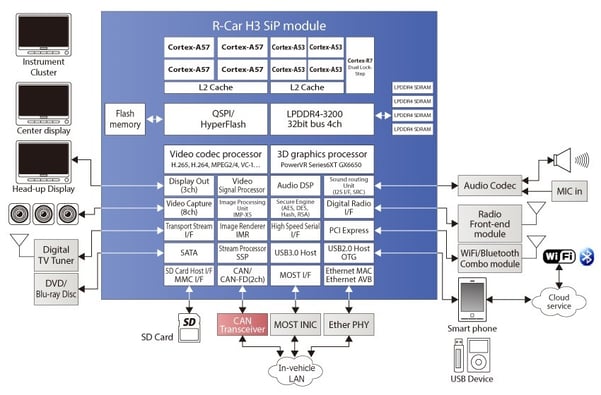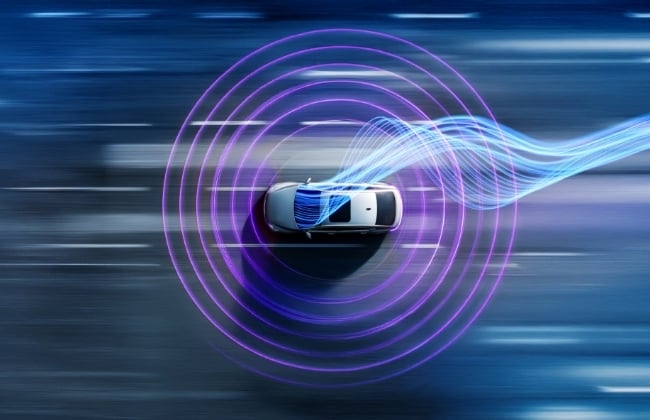- 10 December 2015
- Imagination Technologies
One way of looking at the future of consumer electronics is to analyze markets where there is room for disruption.
In this article I’d like to focus on two of these markets: home entertainment and automotive – and highlight two examples of how Imagination is working closely with semiconductor vendors, OEMs and other companies in its ecosystem to push the boundaries of innovation in consumer electronics.
MediaTek MT8173, PowerVR GX6250 and the rise of multimedia streaming
In a recent post about the future of TV, my colleague Simon Forrest described the changes that are taking place in the home entertainment market. He pointed out that consumers are quickly adopting alternative methods of accessing traditional multimedia formats (movies, TV series, etc.) and that leading companies are re-evaluating the role of television in the home.
Consumers are now spending more of their time using mobile applications such as Netflix for media streaming on tablets, digital media players and home entertainment devices.
One of the devices representing this shift is the new Amazon Fire TV. A digital media player that can be used as an Android gaming microconsole, the Fire TV is powered by a powerful quad-core MT8173 SoC from MediaTek.
 The new Amazon Fire TV features a PowerVR GX6250 GPU
The new Amazon Fire TV features a PowerVR GX6250 GPU
MT8173 incorporates an HMP processor operating at 2.0GHz and a PowerVR GX6250 GPU capable of supporting OpenGL ES 3.2, OpenCL 1.2 and the upcoming Vulkan API. The chip also includes a 20MP image signal processor, support for LPDDR3 memory clocked at 933MHz, and a H.265/VP9-compliant 2160p video codec.
MT8173 has been designed to deliver console-quality 3D gaming and a cinematic home entertainment experience at an affordable price point. To this end, the quad-core MT8173 chip features an upgraded dual-cluster Series6XT GPU that offers up to 50% more graphics performance versus the Series6 GPU used in the MT8135 SoC.
Looking at the peak theoretical numbers, GX6250 delivers 350 million triangles per second and can push out a maximum of 2.8 Gpixels per second, providing an uncompromising user experience for WQXGA display at 60fps.
R-Car H3, PowerVR GX6650 and the forthcoming autonomous car
The era of the connected car is fast approaching and semiconductor companies are making this trend a reality by releasing high-end computing platforms that rival desktop PCs in performance efficiency.
The new R-Car H3 SoC from Renesas is such an example, featuring a number of premium specifications that significantly improve the cognitive and HMI computing capabilities of advanced driving support systems as well as in-vehicle infotainment systems.
The R-Car H3 chip is the first member of the third-generation R-Car family; it delivers ISO 26262 (ASIL-B) compliance for top-of-the line safety and reliability, and comes in a system in package (SiP) configuration that support a wide range of automotive applications.
 Renesas R-Car H3 integrates a PowerVR GX6650 GPU
Renesas R-Car H3 integrates a PowerVR GX6650 GPU
The R-Car H3 includes a PowerVR GX6650 GPU that packs six shading clusters, an evolution from the four-cluster Series6 GPU that powered the R-Car H2 predecessor. The move to a Series6XT GPU delivers a threefold boost in shader performance and enables system manufacturers to utilize the impressive GPU compute capabilities of the new R-Car H3 platform for applications related to autonomous driving.
Initially announced at CES 2014, PowerVR GX6650 is the most powerful Series6XT GPU available today: it includes 192 ALU cores and can process 12 pixels per clock. Additional features include an advanced PowerGearing G6XT power management technology, and a low-power, high-performance FP16 mode that can deliver up to twice the performance of FP32 within a constrained power budget.
Other features that make the new SoC ideal for driving safety support systems include an enhanced computing sub-system that can process large volumes of information from vehicle sensors accurately in real-time, and enables system manufacturers to run applications that require complex processing, such as obstacle detection, driver status recognition, hazard prediction, and hazard avoidance.
I look forward to my trip to CES 2016 in January where I’ll likely encounter more PowerVR-based platforms as well as many other consumer devices powered by Imagination.
Until then, make sure you follow Imagination on Twitter (@ImaginationTech)






